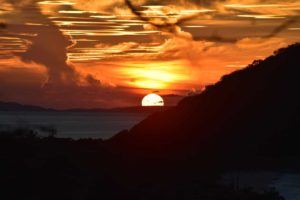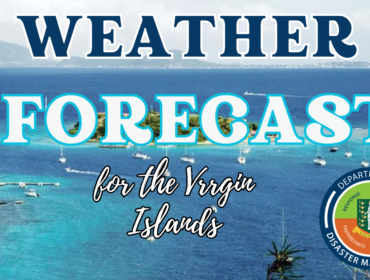A vulnerability and disaster risk profile is being developed for Anegada with
direct funding from the United Nations Development Programme (UNDP).
Contracted by the UNDP to undertake the project, Environmental Planner, Ms.
Marissa Da Breo, an Environmental Planner from the United States, has spent the
last three weeks in the Territory, conducting surveys and preparing the profile
which identifies the natural and technological hazards likely to affect Anegada,
assessing the risk of disaster losses and evaluating the social, economic and
environmental vulnerability of the island.
The first draft of that profile was presented to the residents of Anegada
earlier this week. Speaking to the Department of Disaster Management (DDM) about
the project, Ms. Da Breo said creating the risk profile entailed keen
observation of the community to identify potential risks as well as interaction
with the residents through the use of the Vulnerability and Capacity Assessment
surveys developed by the International Federation of the Red Cross to determine
their level of disaster preparedness.
“There seems to be a general consensus among the residents of Anegada that
disaster preparedness is very important. They are particularly concerned about
hurricanes and tsunamis and very aware of the risks posed by natural hazards to
their community. One preparedness action that stood out was the inclusion of
life jackets in their disaster preparedness kits. I found this to be extremely
innovative and indicative of the awareness of the preparedness actions required,
given the nature of the island, and its vulnerability to coastal hazard impact,”
Ms. Da Breo stated.
The profile includes the findings of the surveys Ms.
Da Breo conducted as well as the analysis of critical datasets provided by the
National Geographic Information System (GIS) Committee and the Development
Planning Unit.
The Anegada residents were also given the opportunity to review and comment
on the draft tsunami evacuation map which was created by the DDM in
collaboration with the National Ocean and Atmospheric Association (NOAA) and
which formed part of the community profiling activities.
In her presentation to Anegadians, Ms. Da Breo outlined the worst case
scenario in the event of a hurricane, earthquake and tsunami. “Many residents
were interested in the models provided that demonstrated the potential impact
generated by hurricanes and tsunamis. We asked them to identify their locations
and to examine the effects of storm surge, wind and inundation levels from
tsunami impact on their properties. It was enlightening to see the level of
enthusiasm displayed among the residents,” she said.
Deputy Director of the DDM, Ms. Evangeline Inniss who manages the
department’s Community Based Disaster Risk Reduction programme explained the
significance of the vulnerability and disaster risk profile saying, “it will not
only help Anegada build capacity to manage a disaster and minimise its impact on
the community but it will also be used by the DDM to help attract donor funds to
undertake disaster risk reduction interventions that would mitigate the risks
identified.”
Ms. Inniss noted that “best practices in disaster risk reduction indicate
that community resilience can be achieved by getting residents to understand the
hazards they face, identify ways to reduce or mitigate hazard impacts and
provide tools and training that allow the community to adequately prepare for
and respond to any disaster.”
The
creation of the vulnerability and disaster risk profile for Anegada is part of a
regional pilot project spearheaded by the UNDP Bureau for Crisis and Conflict
Prevention and the Caribbean Risk Management Initiative. The Cuban Risk
Reduction Management Centres (RRMC) concept features the formation of a small
professional team that manages an information hub at the community level and is
tasked with overseeing risk reduction initiatives.



